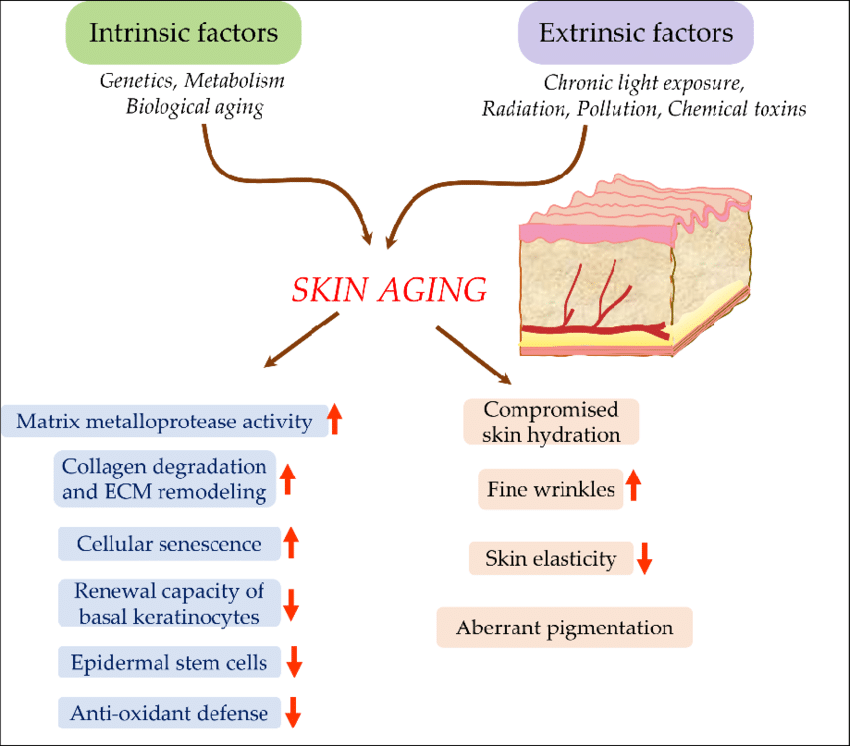I will be covering all things AGING, in a series of social media posts, and then expanding upon those thoughts in more detail here on the EA Blog! So buckle up buttercup, you’re going to learn a few things here!
The first part: WHY does our skin age?
Three words: Lots. Of. Reasons.
A major contributor: fibroblasts. Specifically, senescent fibroblasts. Big word, I know, but basically senescent means that they’ve essentially, irreversibly gone into a deep DEEP sleep. First, let’s talk about fibroblasts. They live in the dermis, which is under the most surface level of our skin (which is termed the epidermis), and they’re responsible for creating collagen, elastin, & overall healthy, youthful tissue. They organize the extracellular matrix and communicate with the adjacent stem cell colonies and all other types of tissues. This makes them VERY valuable.
An increasing number of studies are pointing to these all-important fibroblasts turning all Sleeping Beauty on us, and going to sleep until a Prince can wake them up! Then, like the Fairy Godmothers who spread their pixie dust on the entire kingdom and put everyone else to sleep too, this Pixie Dust of Depression (lol, a little dramatic but you get the point) then spreads to neighboring cells… and the entire “kingdom” of our skin goes to sleep.
The result: skin that is thin, dry, wrinkled and less elastic.

WHY do the fibroblasts go to sleep in the first place?
- Natural aging of all cells (felt to be secondary to the factors below)
- UV exposure/radiation
- Genetics
- Poor diet
- Smoking
- Pollution
- Chronic disease
- Hormonal changes
What can we do to keep these senescent fibroblasts from falling asleep in the first place? Or once they have gone to sleep, can we wake them back up with a “Prince’s kiss”? Stay tuned to find out!
References
Wlaschek, M, Maity, P, Makrantonaki, E., & Scharffetter-Kochanek, K. “Connective Tissue and Fibroblast Senescence in Skin Aging” (2021). J of Investigative Dermatology, 141: 985-992.
Fuller, N. Et al. “Cell Senescence-Independent Changes of Human Skin Fibroblasts with Age.” (2024). Cells, 13(8), 659.
Chin, T., Lee, X.E, Ng, P.Y., Lee, Y, and Dreesen, O. (2023). “The role of cellular senescence in skin aging and age-related skin pathologies”. Frontiers in Physiology, 14.
Singh, Prachi & Bhat, Shruthi & Singh, Nikhil & Venkanna, Babu & Mohamed, Rafiq & Pralhada Rao, Raghavendra. (2022). Cell-Based Model Systems for Validation of Various Efficacy-Based Claims for Cosmetic Ingredients. Cosmetics. 9. 107. 10.3390/cosmetics9050107.

